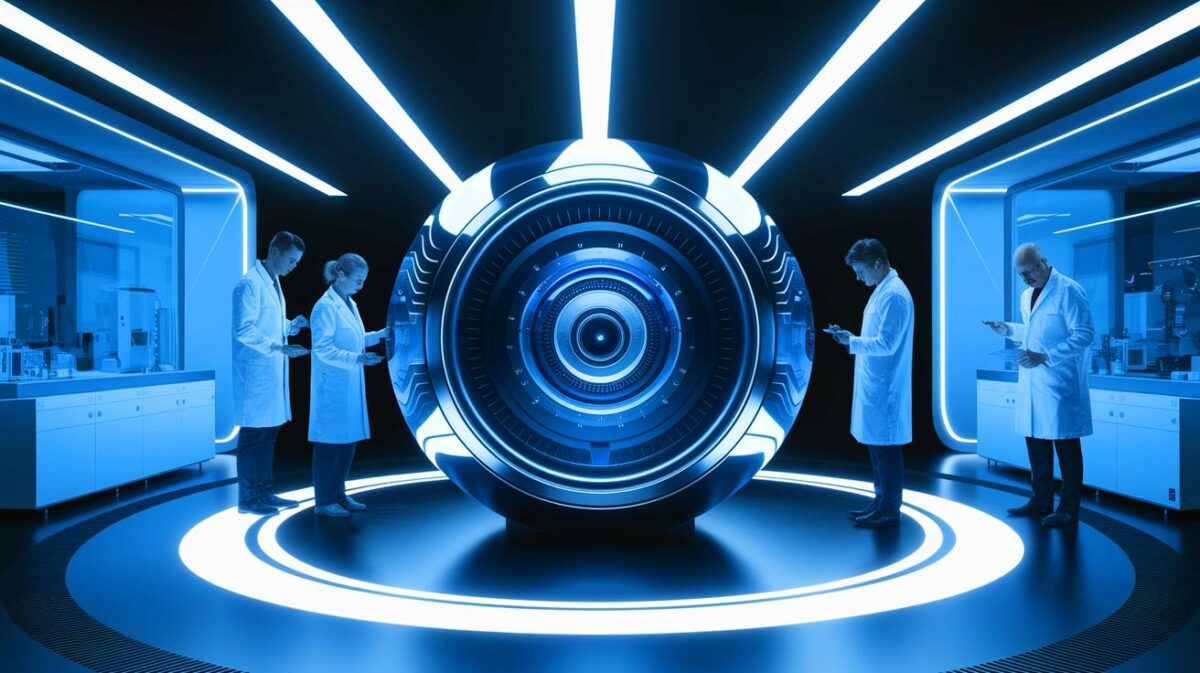| IN A NUTSHELL |
|
The dawn of a new era in nuclear research and energy is upon us, thanks to a groundbreaking development from the University of the West of Scotland (UWS). In a bid to revolutionize fields such as clean energy research, environmental monitoring, and medicine, UWS has developed the world’s first compact nuclear radiation detector module. This innovative device is set to be deployed at the world’s top laboratories, promising to unlock unprecedented pathways in nuclear experiments. As we delve into the details of this remarkable invention, its implications for the future of energy and research become undeniably clear.
World’s First Radiation Detector Module
The development of the radiation detector, known as LaBr3 (Ce), was led by the esteemed Dr. S Nara Singh Bondili at UWS. This detector is a technological marvel due to its improved radiation detection capabilities, portability, and adaptability. The applications of this detector are vast, spanning laboratory settings, clean energy initiatives, environmental radiation monitoring, and medical research.
One of the most notable uses of the detector is within top laboratories like CERN, where it will aid in advanced studies in nuclear astrophysics. By measuring elemental abundances and exploring fundamental physics symmetries, this detector will provide insights into nuclear reactions and structures that were previously unattainable. Furthermore, undergraduate students at UWS are already reaping the benefits of this advancement, utilizing a prototype in the teaching lab for the Year 3 Physics with Nuclear Technology module.
First-of-Its-Kind Innovation
This project is not just a technological endeavor; it serves crucial research purposes and addresses the growing need for nuclear expertise in the UK. The detector plays a vital role in prominent nuclear physics experiments that study elemental abundances, rare isotopes, and fundamental symmetries. Such research is pivotal for enhancing our understanding of the universe and the forces that govern it.
Dr. Bondili expressed immense excitement about this world-first innovation, stating, “This novel prototype detector has not been constructed anywhere else to our knowledge to date.” The introduction of the Detectors and Nuclear Lab Skills module further enhances the Physics with Nuclear Technology Undergraduate Programme at UWS, positioning it as Scotland’s leading institution for studying nuclear physics and its applications.
“UK’s robotic hound takes over” – This remote-controlled dog now conquers deadly nuclear zones
Collaborative Efforts and Impact
The creation of this detector is the result of a worldwide collaboration, funded by prestigious bodies such as the Science and Technology Facilities Council UK Nuclear Data Network, Royal Society of Edinburgh, and a UKSTFC consolidated grant of UWS. Initially constructed in 2021, the prototype was further developed in collaboration with the University of York, exemplifying the power of collaborative research in driving innovation forward.
This detector is not only a tool for advanced research but also a catalyst for training the next generation of nuclear physicists. The hands-on skills imparted through the Detectors and Nuclear Lab Skills module are essential for developing a future workforce adept in nuclear research and energy applications, addressing a critical skill gap in the industry.
The Future of Nuclear Research and Energy
As the world grapples with the pressing need for sustainable energy solutions, the introduction of this compact nuclear detector could be a game-changer. By providing enhanced capabilities for nuclear research, it paves the way for cleaner, more efficient energy production methods. The potential applications in medicine and environmental monitoring further underscore the far-reaching impact of this technology.
UWS’s pioneering efforts are setting a new standard in nuclear research, with the promise of significant contributions to global energy challenges. This innovation highlights the crucial role of educational institutions in advancing scientific research and technology for the betterment of society.
The development of the world’s first compact nuclear detector marks a significant milestone in the quest for sustainable energy solutions. As this technology begins to unfold its potential, we are left to ponder: How will this innovation influence the future landscape of global energy production and research?
Did you like it? 4.6/5 (22)









Wow, this sounds like a game-changer! How soon can we expect to see this technology in use globally? 🌍
How does this detector compare to existing technology in terms of cost and efficiency? 🤔
This is amazing news! Thank you, UWS, for pushing the boundaries of nuclear research! 🙏
Can you explain in layman’s terms how this detector actually works?
Is this really safe for widespread use? I’ve heard nuclear technology can be quite risky. 😨
Sounds cool, but how much will it cost to implement this on a large scale?
Thank you for sharing this! I’m excited to see how this will impact clean energy initiatives. 🌱
As someone studying nuclear physics, this is really exciting news! Can’t wait to see it in action.
Does this mean we won’t have to worry about energy shortages anymore? 🤞
I’m a bit skeptical. Is this just another piece of tech that won’t live up to the hype? 🤔
How does this innovation affect current nuclear energy policies in the UK?
UWS is really putting Scotland on the map in the field of nuclear research! 💪
Is there any environmental risk associated with the use of this detector? 🌿
Great! But how long will it take for this technology to be adopted globally?
This sounds like science fiction! Are there any practical challenges still to overcome?
Does the development of this detector mean cheaper energy costs for consumers? 💡
Why hasn’t anyone thought of this before? Seems revolutionary indeed!
I hope this technology won’t be monopolized by big energy companies. 🤞
Can’t wait to see how this will change the landscape of global energy! 🌎
How will this detector impact nuclear medicine research?
Thank you, Dr. Bondili, for your pioneering work in nuclear technology! 🙌
What are the next steps for further development and deployment of this detector?
Has this been tested in real-world conditions yet?
Is there any chance this could be used for military purposes? 😱
How does this technology fit into the current nuclear non-proliferation treaties?
This is huge! How soon can we see changes in our daily energy consumption?
What role did the University of York play in this development?
I’m excited but cautious. Let’s hope this leads to a truly cleaner energy future. 🌞
How will this affect students currently studying in nuclear technology programs?